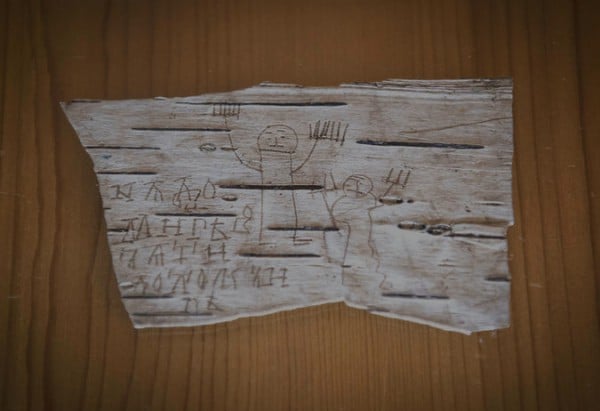Art World
Ancient Children’s Drawings Saved by Mud in ‘Russian Pompeii’


Henri Neuendorf

Thousands of century-old documents and manuscripts have been discovered in “The Russian Pompeii” of Novgorod, perfectly preserved by the unique soil of the region, Hyperallergic reports. The messages, written on birch bark and dating from the 11th to 14th centuries, offer a unique insight into the living conditions of the Russian people at the time.
In a recent article, the New York Times explained that “the wet, clay soil that lies under Novgorod, and contains little or no oxygen, has the unusual chemical quality that preserves both hard artifacts made of metal and items made of softer material like leather.”
Before the availability of paper, people in the region used sharp objects to scratch messages into soft birch bark. As the material was broadly available, historians have been able to gain an understanding of the daily lives of a wide cross-section of society.
The discoveries include texts and notes from peasants, merchants’s business documents, children’s drawings, and more sinister historical records such as crime reports and documents detailing slave trade.
Although archaeologists have been finding the spectacularly preserved documents in the region since the 1950s, the project has taken a new dimension of late as technological advancements have allowed scientist to compile all the information into an online database (in Russian).